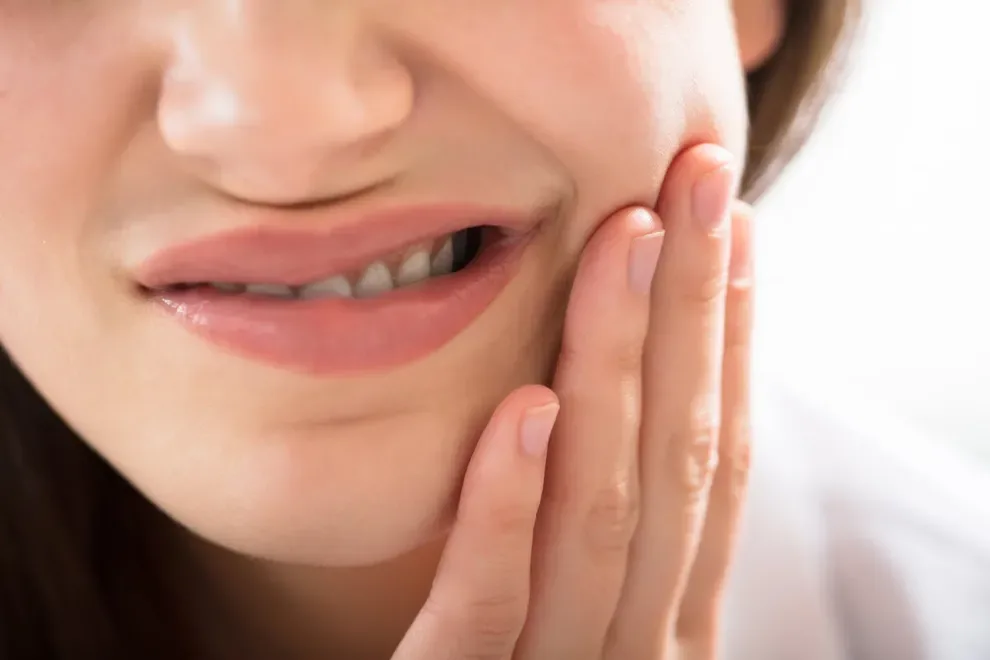How Changes in Pressure Cause Tooth Squeeze

Table of Contents
- Causes
- Treatment
- Diagnosis
- Prevention
- When to See a Doctor
Tooth squeeze, also known as barodontalgia, is mouth and tooth pain evoked by changes in atmospheric pressure. It is common among divers and people who are frequently airborne. When a change in pressure results in tooth injury and pain, the condition is known as barotrauma.
Similarly, tooth squeeze can also accompany a condition known as barosinusitis, which is the inflammation of paranasal sinuses. The sinus cavities located in a person’s skull, and their inflammation results when one subjects their body to a significant change in pressure.
Causes of Tooth Squeeze
You will experience tooth squeeze when your body experiences rapid high or low-pressure changes. In scuba diving and aviation, pressure changes will affect you in different ways.
Tooth Squeeze occurs when one descends into deeper waters. It can also happen during ascent when one resurfaces.
As you dive, your body is subject to a pressure higher than that experienced on land. This high-pressure air affects airspaces inside teeth. Such airspaces form mainly because of insufficient dental fillings.
As you dive further into deeper waters, thes air will exert further force on the teeth structures, leading to pain in the teeth.
There is a pressure reduction during flights as the aircraft moves towards higher altitudes. With the decrease, one might experience tooth pain. That’s because the air inside your tooth has no space to expand, causing air pressure imbalance.
You will likely experience tooth pain in unpressurized cabins than pressurized ones. Some other factors have a link to barodontalgia, including:
Tooth decay leads to the formation of holes in teeth
Faulty dental restorations that result in airspaces
History of recent surgery
Swellings that form on the tips of teeth (dental cysts)
Pulpitis, a condition where the innermost part of a tooth (pulp) gets inflamed.
Symptoms of Tooth Squeeze
In most cases, tooth squeeze is more of a symptom than a disease.
It presents as a symptom for different dental disorders, such as an inflammatory cyst.
There are different types of symptoms you might show when you have barodontalgia. Symptoms depend on the cause of the tooth squeeze. Some symptoms one might experience include:
Sharp pain when moving towards higher altitudes
Pain in the teeth, jaw and gums
Severe adamant pain during descent or ascent
Tooth sensitivity occur
Broken fillings
Loosened tooth crowns
Bleeding gums
Treatment of Teeth Squeeze
The best way to treat teeth squeezing is by eradicating dental condition that cause it. The dentist can treat tooth squeeze to fix a variety of issues, including fillings, crowns and root canals.
A dentist will carry out this procedure when loose teeth cause tooth pain. It involves tight fixation of false teeth to the jaw bone, which will prevent their dislodgement.
Resin cement is the best for cementing teeth of underwater divers and pilots because of its ability to resist pressure changes.
They re-fill the spaces resulting from tooth decay. Sealing off these spaces will prevent air entrapment, thus treating barodontalgia.
Root filling or root canal treatment is a regimen done on teeth affected by pulpitis. This condition results in inflammation of the inner tissues of teeth (pulp). If pulpitis causes barodontalgia, dental periodontics treat it using root fillings.
In other cases, a person might have a mild form of tooth squeeze needing no medical intervention. If this is the case, the dentist will prescribe drugs for you to ease the pain. Ibuprofen is the standard drug used in treating dental pain.
Diagnosis of Tooth Squeeze
If a physician suspects that you have barodontalgia, they will perform a diagnostic treatment. The dentist first will ask you to describe the intensity of the tooth pain using a 0 to 10 Numerical rating scale. For example, zero means no pain, and 10 is the worst pain.
The doctor will also ask about your medical history. It will help confirm if the pain is due to a side effect of the drugs you had taken before or not.
Tooth Examination
The physician can also examine your teeth to identify the cause of the tooth pain. They can conduct a clinical or a radiographic examination.
Clinical examination: The doctor will physically check your teeth using their eyes. They will then try to look for problems such as dental carries causing the tooth squeeze.
Radiographic examination: It involves an X-ray to view the internal structures of the teeth. Doctors use it is to examine parts such as tooth roots that are invisible during a physical examination.
Prevention of Barodontalgia
The best way to avoid tooth squeeze is to maintain your teeth. Having healthy teeth will help keep dental diseases that cause barodontalgia at bay. It also helps if you practice the following:
Dental Checkups: A regular visit to the dentist is crucial when preventing barodontalgia. The dentist will check the dental restorations making sure they are healthy. They will also check your teeth, ensuring they are not affected by any dental diseases.
Scuba Diving and Flight restrictions: Avoid flying or diving immediately after getting dental restorations as it helps prevent tooth dislodgement, which causes tooth squeeze.
Maintaining oral health: Daily brushing and flossing of teeth will also help avert barodontalgia. It reduces the occurrence of oral infections that causes the condition.
When to See a Doctor
Experts advise you to see the dentist when you start having tooth pain while flying or diving. Seek medical advice even if the pain ceases after returning to the land surface because the cause for the tooth pain could be due to an underlying oral disease.
